The weekend had been circled in the diary for weeks—a much-anticipated trip to Coniston to reconnect with friends and meet new ones. We were eager to get our hands on rock, scramble in the fells, and enjoy the last of the summer sun in one of the Lake District’s most iconic areas, and definitely one of our favorite places to go.
As with many weekends away, it began with a dash to reach the campsite before check-in closed. This time, we stayed at Coniston Coppice, nestled on the edge of Coniston Water. We remembered from our last visit that the ground was rock-hard, so we were glad to have steel pegs and a trusty hammer (in our case, an ice axe!), which did the trick. We had also brought a layer of pond liner to protect the groundsheet of our tent. Despite the effort of driving in the pegs, the rewards were a peaceful woodland setting with a pizza and fish and chip van on hand, and some of the best campsite facilities around. It’s a quiet place, just a short walk from the lake, and the perfect start to a weekend of adventure. We were grateful for a good night’s sleep, away from the partying that can pervade some of the other nearby campsites.
Morning came quickly, and after a hearty breakfast, we packed our bags with sandwiches and gear, then headed along the disused railway line to Coniston’s Tourist Information Office to meet the rest of our group. The weather was ideal—clear skies and a gentle breeze—so we set off in high spirits, making our way up the Coniston Coppermines Valley.
The valley, once bustling with miners during the copper boom of the 19th century, now feels like a hidden sanctuary, dotted with remnants of its industrial past. Our first scramble, Long Crag Buttress, awaited at the entrance to the valley.
Long Crag Buttress, a Grade 1 scramble, starts near the village and rises quickly on rough, gabbro-like rock. The textured surface provided excellent grip as we ascended. Despite its proximity to the village, this scramble offers plenty of entertainment with its broken, easy-angled rock. The route takes you over a series of enjoyable slabs, interspersed with grassy ledges, making it an ideal introduction to the day’s activities.
From Long Crag, we descended through a network of sheep paths, crossed a stream, and began our climb toward The Bell, another standout Grade 1 scramble. Though The Bell is a short route, it doesn’t lack in character. The slabby rocks offered positive holds, and the frontal rock rib gave us a tasty challenge for the grade. Starting with a flaky ridge, we soon found ourselves scrambling up slabs, passing a terrace with stunning views over the valley. The rock here is solid, with plenty of friction—perfect for a quick but satisfying ascent.
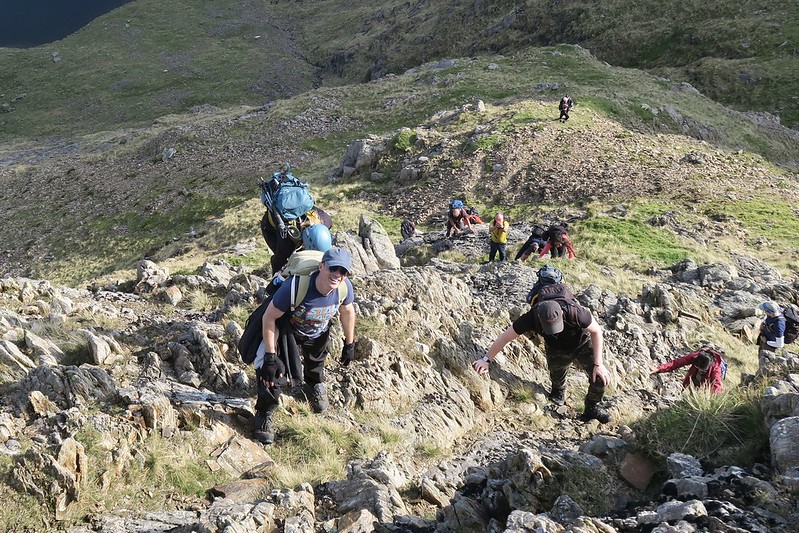

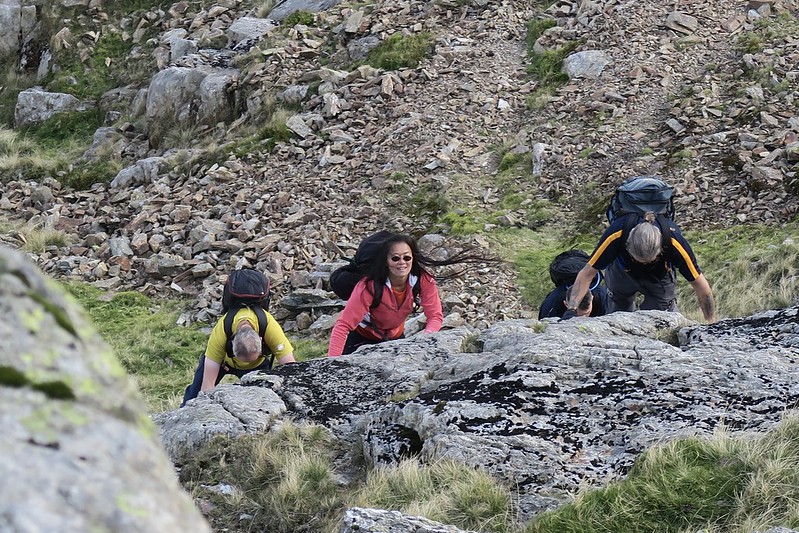
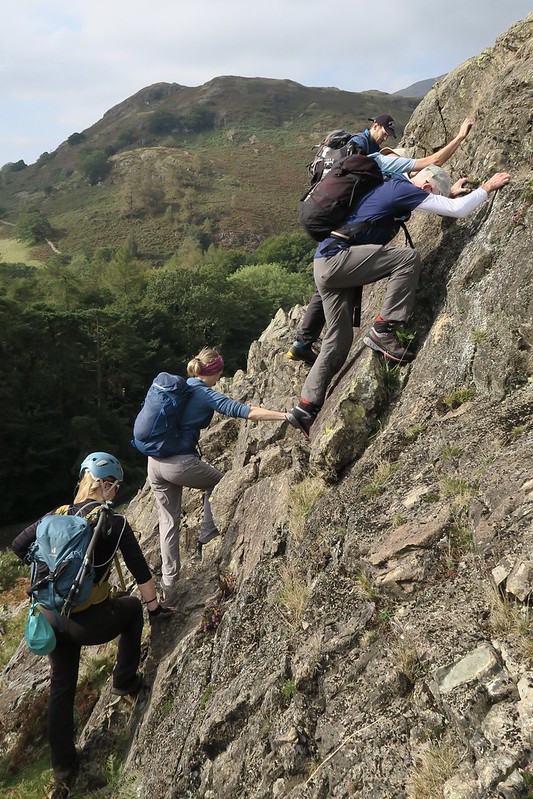
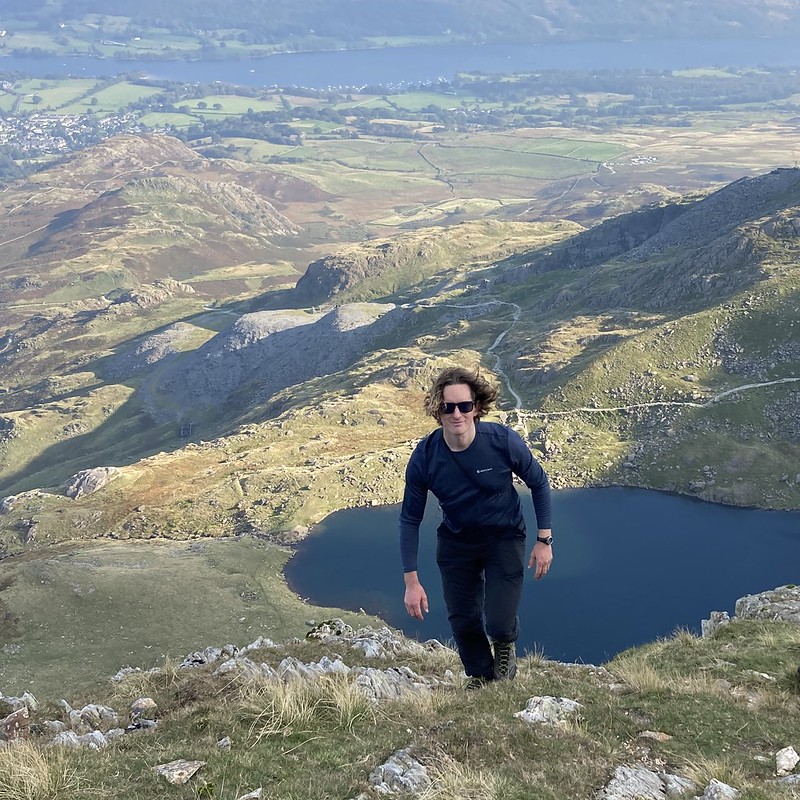
After topping out on The Bell, we made our way up to Low Water, where some adventurous souls braved the cold for a quick swim. The tarn, nestled below The Old Man of Coniston, is a serene spot and the perfect place to refuel before the day’s toughest challenge: Brim Fell Slabs.
The approach to Brim Fell takes you along the northern side of Low Water, and the scramble starts with broken slabs that lead up toward the summit. The rock is classic Coniston fare—rough, sound, and full of holds. Following the guidebook, we picked our way up the slabs. This Grade 2 scramble requires a bit more attention to route-finding, but in the good weather, it was straightforward. As we ascended, the slabs provided delightful moves, and though some of the rock was shattered in places, the friction held beautifully underfoot.
We avoided the direct climb on the steep wall, opting for a four-meter ascent up a gully instead before traversing back onto the ridge and leading all the way to the summit of Brim Fell.
From Brim Fell, it was a short ridge walk to the top of The Old Man of Coniston, the highest point in the Coniston Fells. Once the tallest mountain in Lancashire before the county boundaries changed, it remains one of the most iconic summits in the Lake District. The views were magnificent, stretching over Coniston Water and beyond. After soaking in the panorama, we began our leisurely descent, following the well-worn footpath back to Coniston village.
Once in the village, we couldn’t resist grabbing a few snacks from the local shop before strolling along the lakeside footpath back to our campsite. As the evening drew in, we settled down for dinner on the camping stove, and it wasn’t long before we turned in for an early night, exhausted but elated.
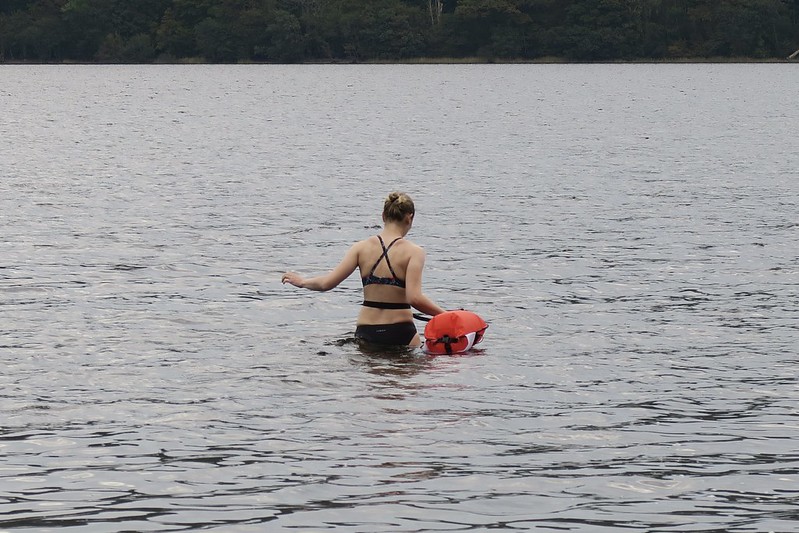
Sunday dawned just as sunny, though a bit cooler. After packing up, we made our way down to Coniston Water for a refreshing swim in the lake from a quiet bay by Torva Wood. Next, we had coffee at the shack by the Birmingham University Outdoor Centre before starting our journey home. On the way, we stopped at Sizergh Castle, a National Trust property with a fascinating history. For over 800 years, Sizergh has been the home of the Strickland family, and wandering through its grand halls and gardens was the perfect way to round off the weekend. A jacket potato from the café, and we were back on the road, already reminiscing about our time on the rock.
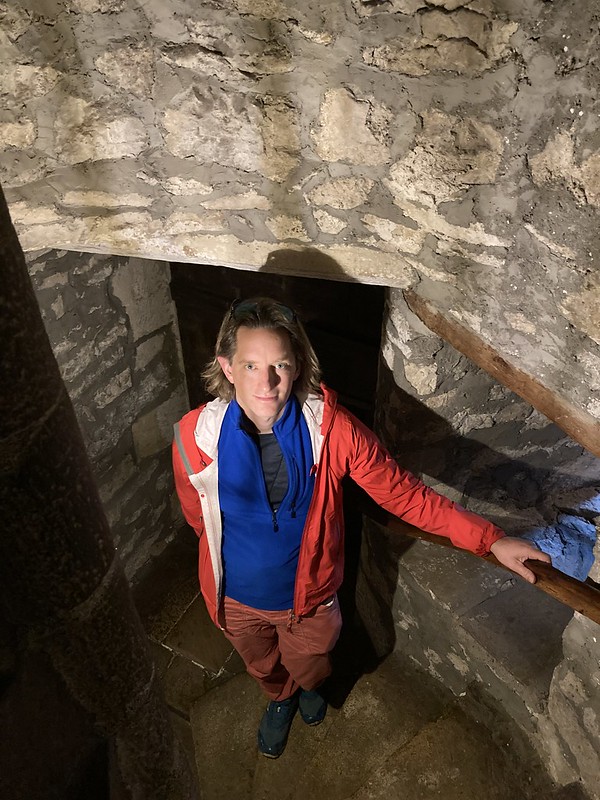
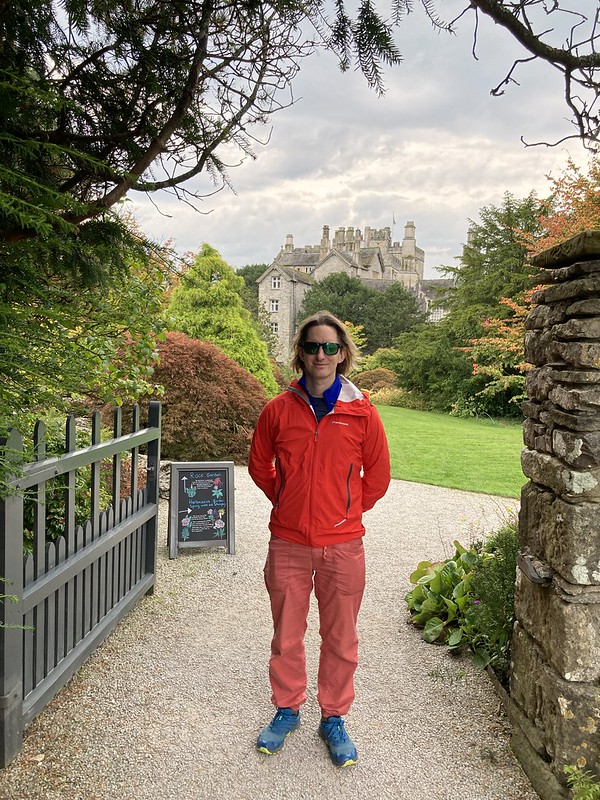
As Monday morning brought the autumn equinox, I couldn’t help but reflect on the weekend. There’s something magical about making the most of the last summer days, especially when spent scrambling under clear skies in the heart of the Lake District. Coniston’s scrambles, from the delightful slabs of Long Crag to the airy ridges of Brim Fell, offer the perfect balance of challenge and reward. For any dedicated scrambler, this is a route not to be missed.
As I sit here drying out my gear, I can’t wait for the next adventure in the mountains, with the wind in my hair and good friends by my side.